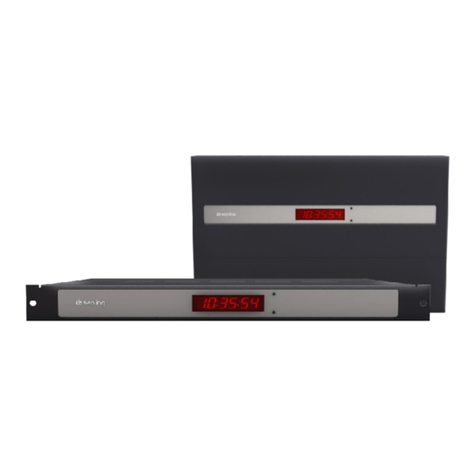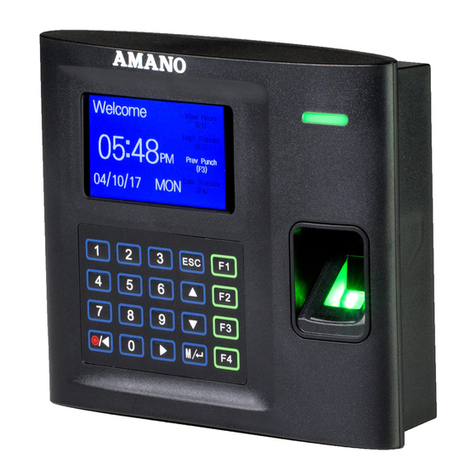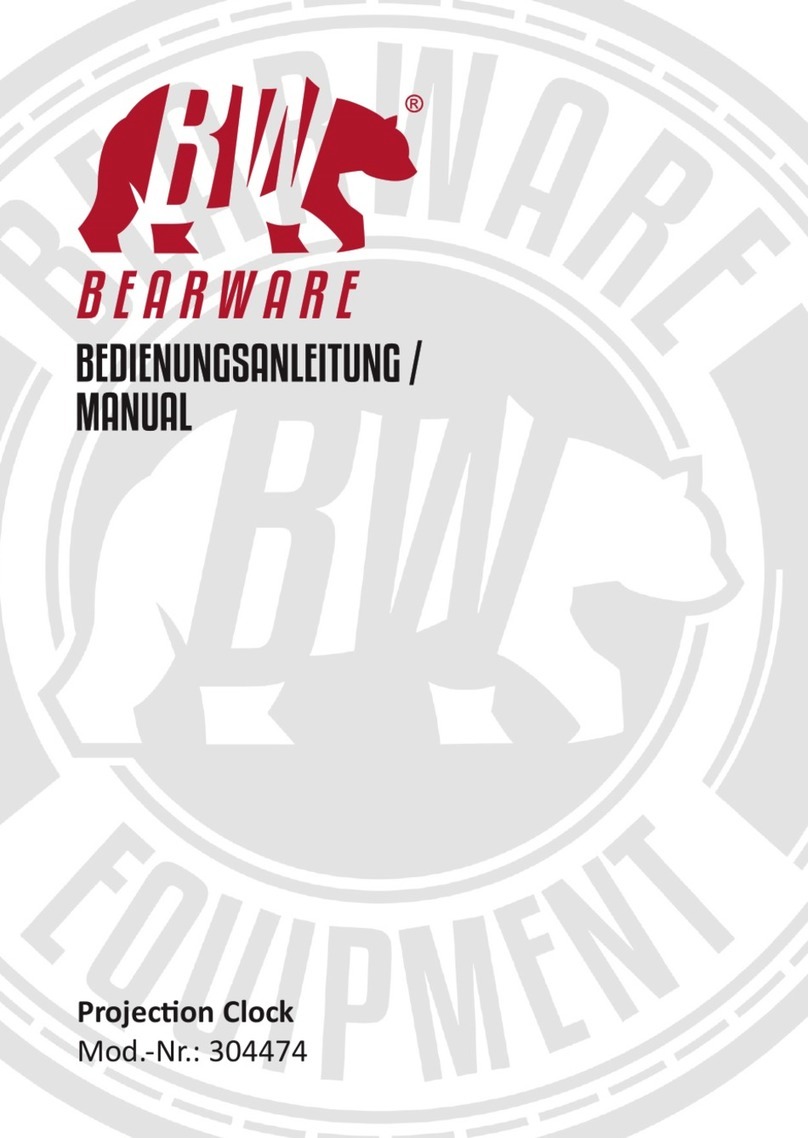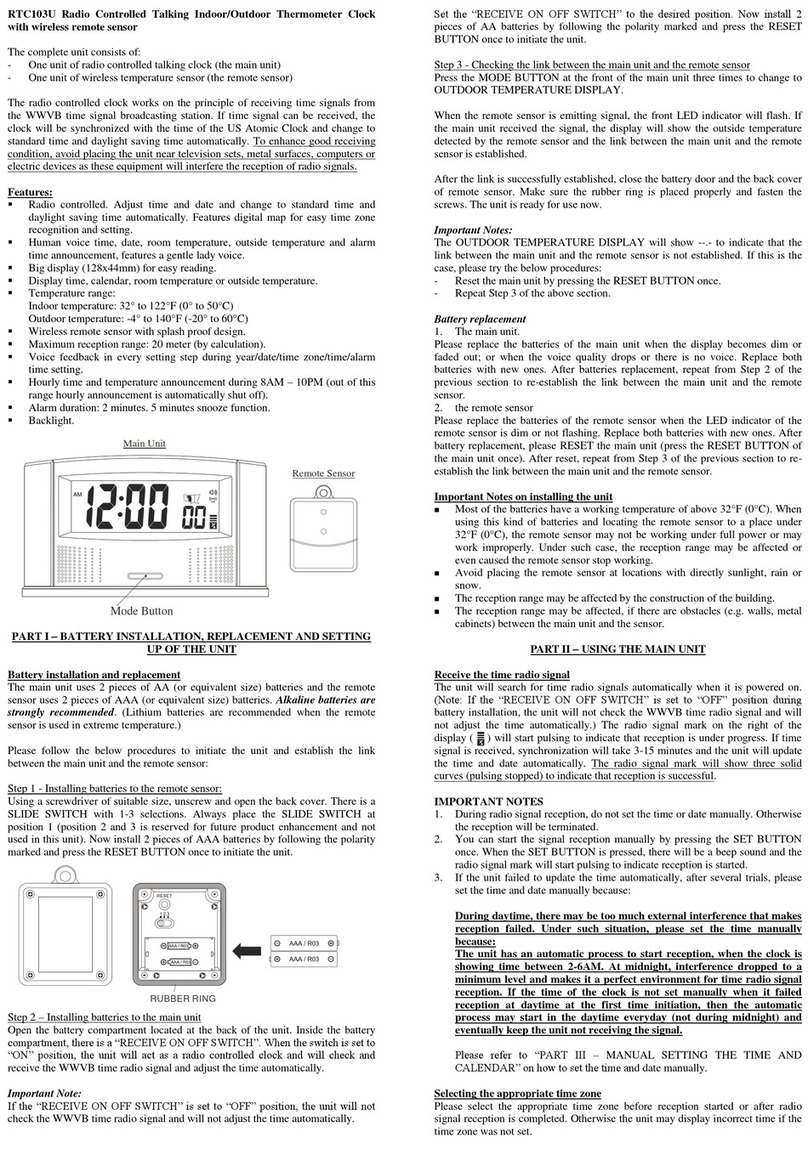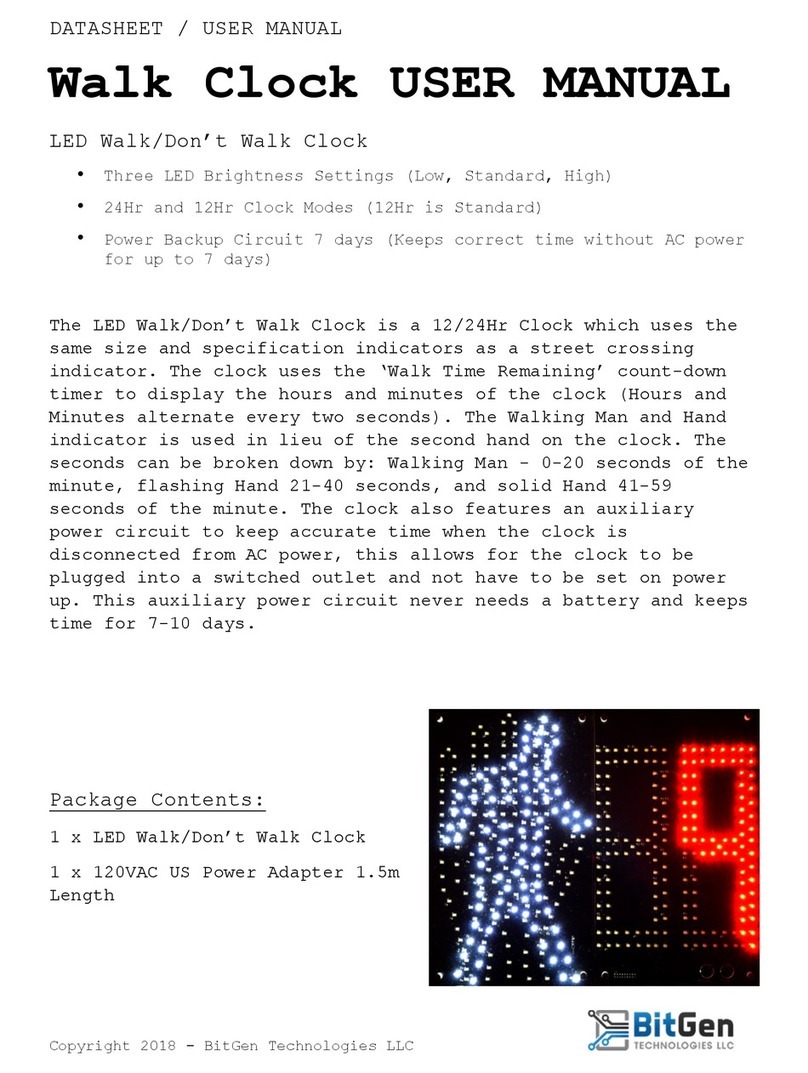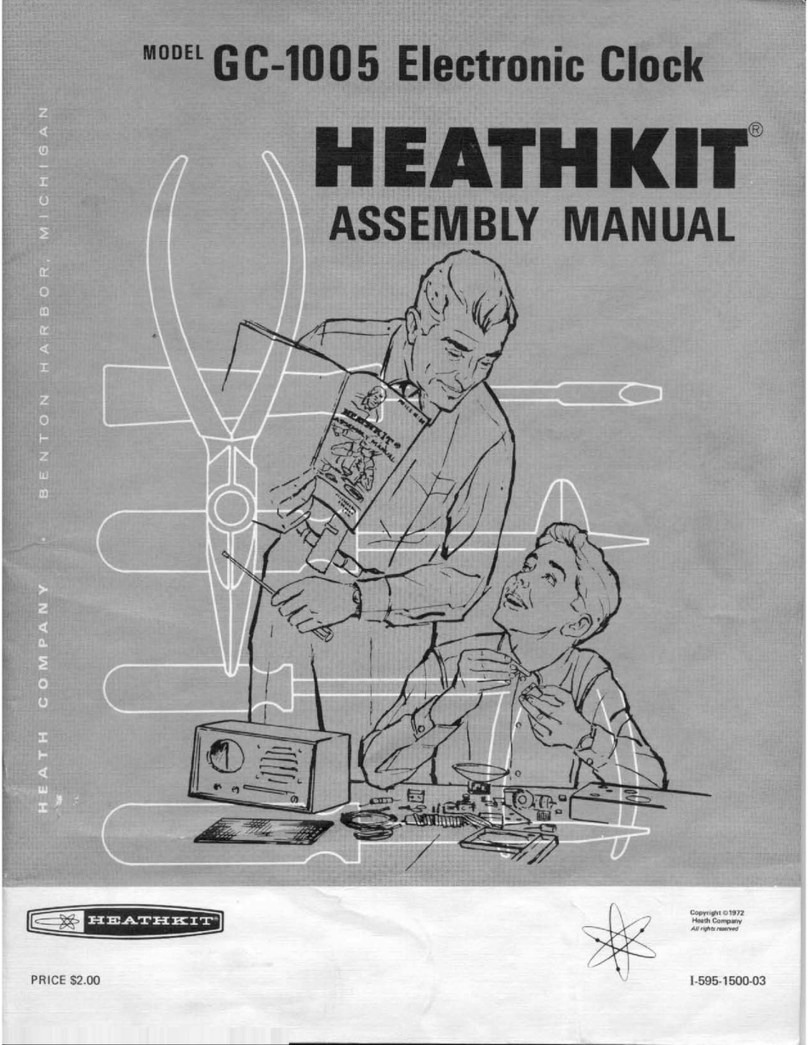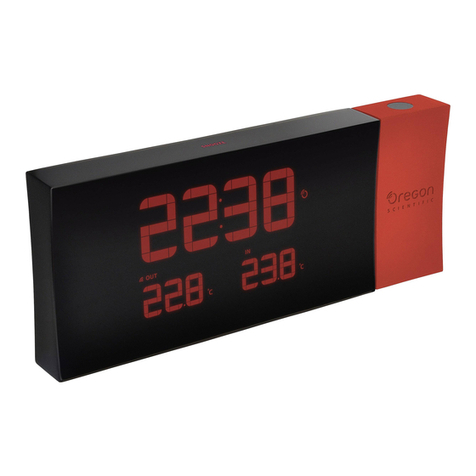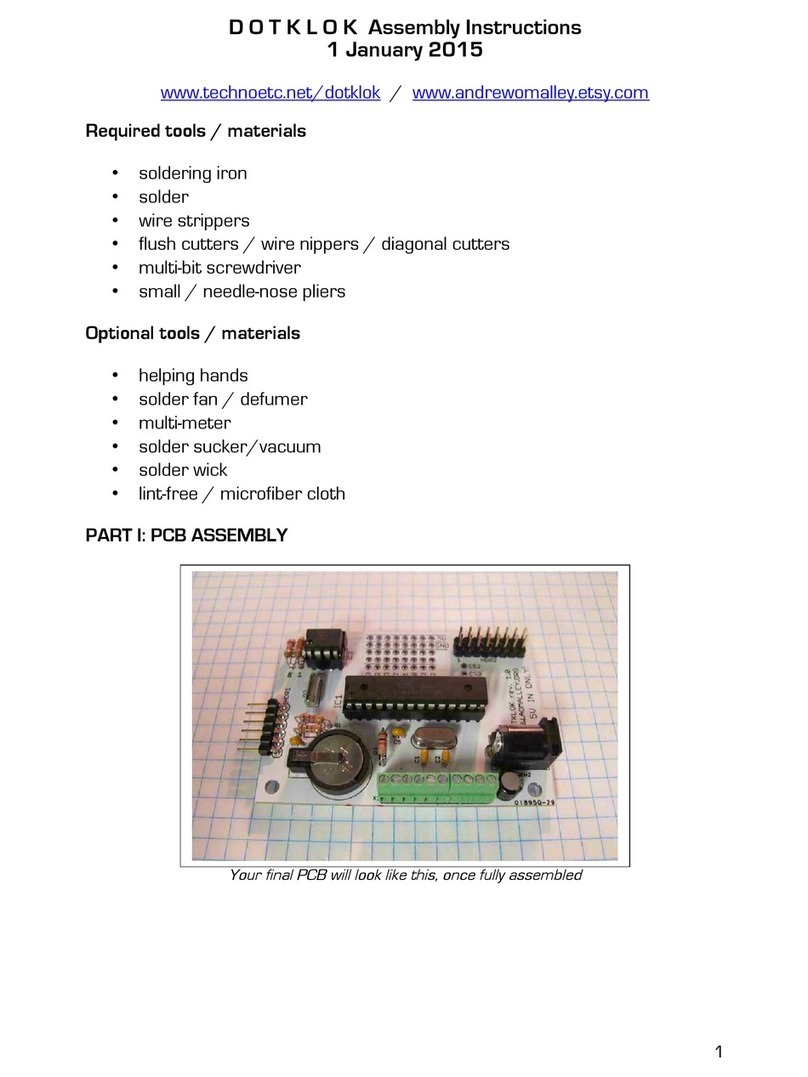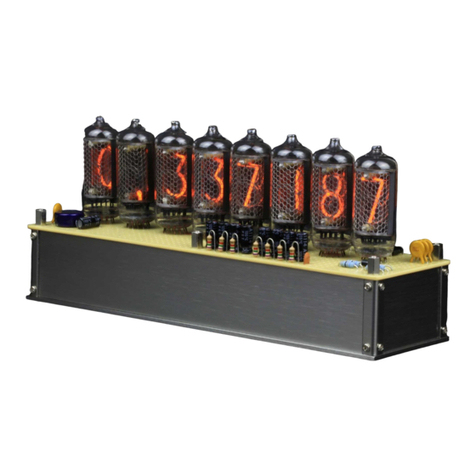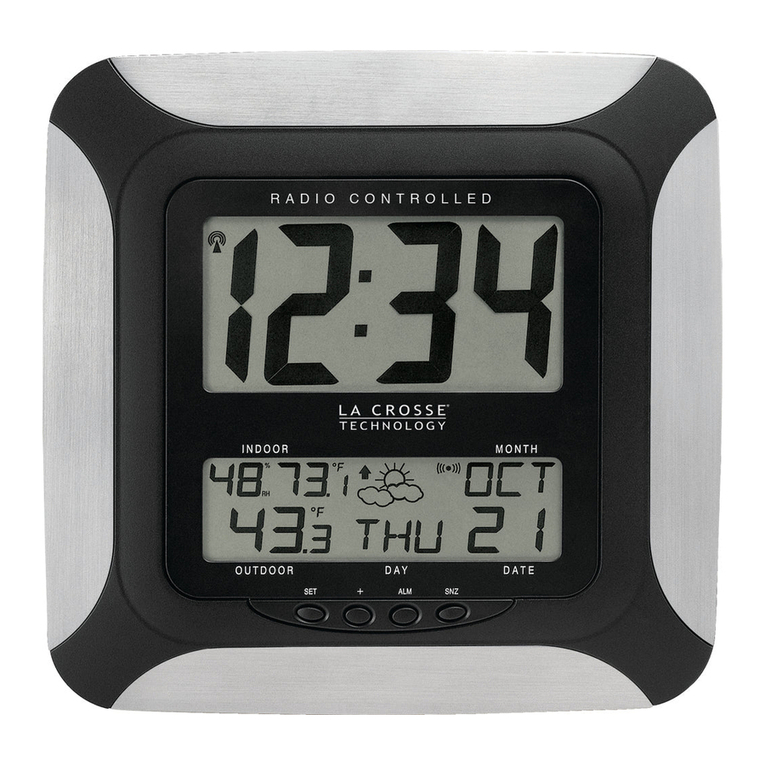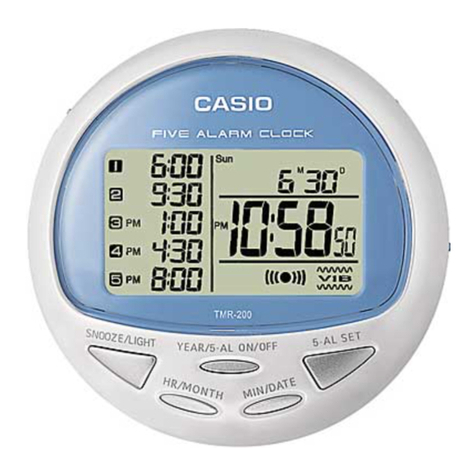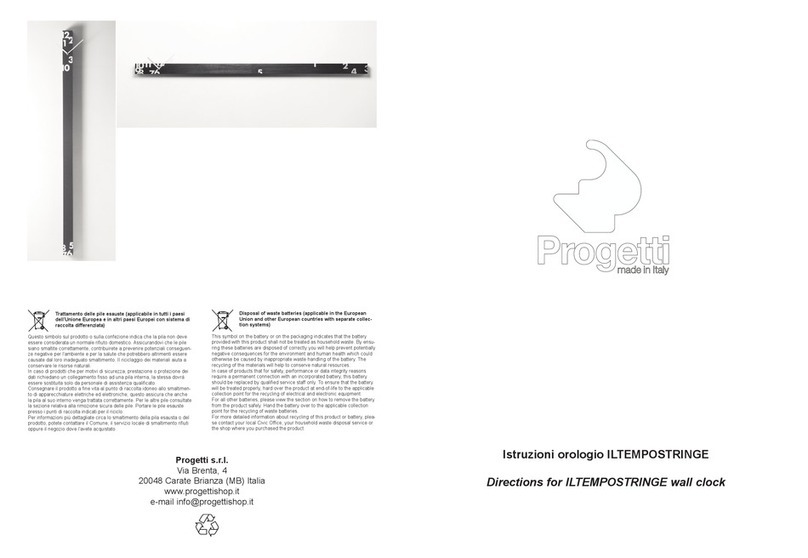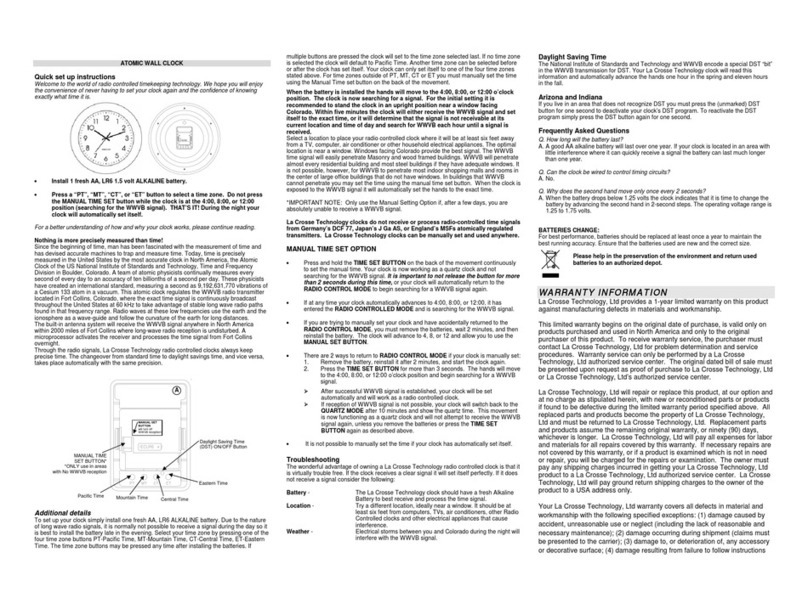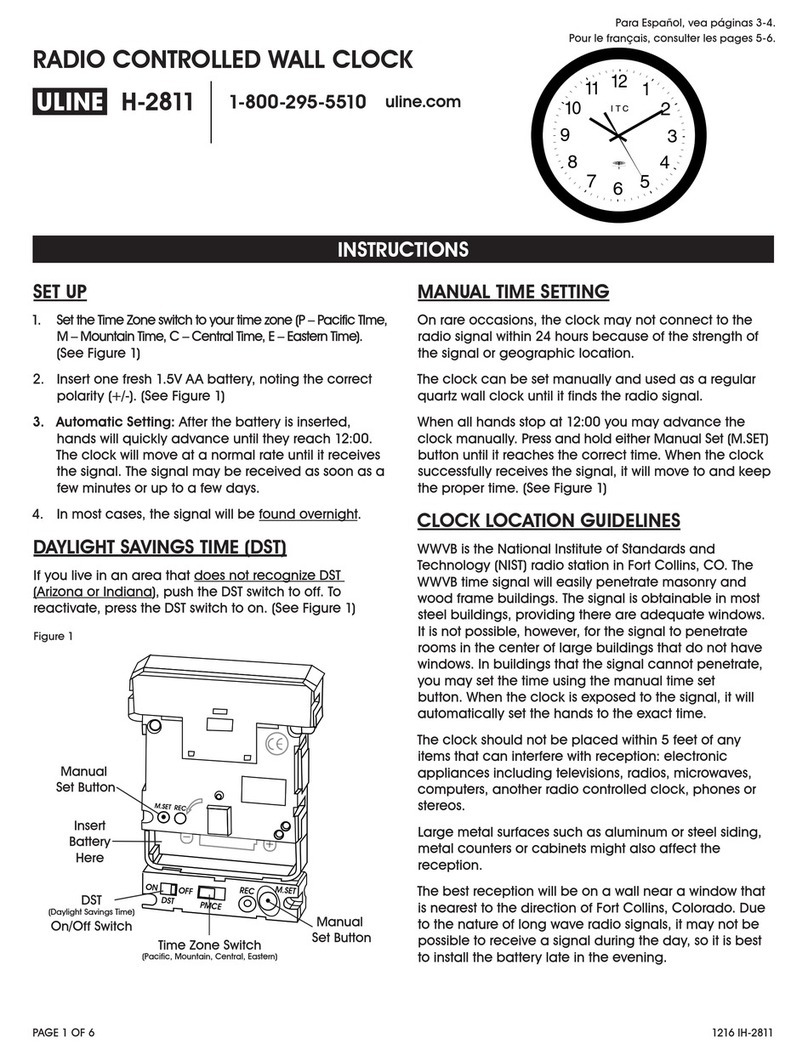2524 Master Clock Installation
Music: Output of a control signal that can activate a 12-volt S-Bus: The connection used for the audio signal in Chrono-
external
DPDT
relay for switching music audio to the Off-Bus Com and ChronoCom TL systems.
(e.g., switching music on class change on a Telecenter IV or V
system). Beep: The output that activates the signaling of calls by an
external device.
Page In: Allows a remote phone to be used for all-page. (Note:
not available on TL systems.) ICAmp: The connection for the TC4160 Intercom Amplifier
on the ChronoCom Communication Systems.
Page Out: This output is grounded to control all-page from
a remote telephone with an MCZ300 panel on earlier Chrono- Busy: The signal present when the front keypad of the 2524
Com Systems. controller is being used.
Installation
Jumpers
Before enclosing the unit in a rack, make sure that its internal
jumpers are set the way you want them. The Baud-rate jumper
affects only a computer that can be connected for diagnosing
and programming the 2524 (using the optional T2524 Diagnos-
tic Program). If you want to “disable” the programming (to
prevent future tampering), you’ll have to program the 2524 with
the jumper in the
“EN”
(“enable”) position before changing the
jumper to the
“DIS”
setting and enclosing the unit (see the
clock-programming manual, KI-1733). The jumper locations are
shown in the attached drawing IL0341.
Rack Mounting
The 2524 is designed for mounting in a standard 19-inch rack.
No special treatment is required if other equipment is mounted
next to it.
Step 1. Locate 31/2inches of rack space where the 2524 will
be mounted. Slide the four supplied #10 Tinnerman clips over
the mounting holes in the channel rails. (If the channel rails
holes are tapped, do not use these clips.)
Step 2. Prepare the mounting screws by placing a black flat
washer and then a fiber washer over each one (all supplied).
Step 3. Position the 2524 in the rack, align its front-panel
mounting holes with the Tinnerman clips, and use the four
prepared machine screws to secure it to the channel rails.
Wiring
Follow the attached wiring diagrams and refer asnecessary to
the earlier descriptions of the terminals and accessories. What
follows here are a few helpful details.
Screw-Terminal Cover
To access the screw terminals, remove the shield from the
bottom of the electrical box that is attached to the rear of the
chassis (on the right, as viewed from the rear). Remove the two
sheet metal screws, then disengage the cover’s tabs from the slots
in the 2524’s chassis by sliding the cover to the left and then
pulling it straight back. Reverse this process to re-secure the
cover.
For a permanent installation and to protect against shock
hazard, run the
120-VAC
wires through conduit attached to one
of the cover’s knockouts. If you are running both high- and
low-voltage wires, use separate conduits and knockouts. For any
low-voltage wires run in conduit, use the knockout nearest the
Zone/Output terminals. The
120-VAC
wires should be
14-AWG
or
heavier-gauge, and they should have an added six-inch loop
inside the cover.
Signaling Devices and Equipment
The attached KM0987 shows how signaling devices and
equipment can be connected for each zone. If two or more
signaling devices are required for a given zone, they can be
connected in parallel and share the connections to the relay
terminals for that zone. For loads that exceed the built-in relays’
rating, install 2418 or 2419 Buffers (see“Associated Equipment”
in the earlier part of this manual).
The 2524 can activate these devices for up to 59 seconds or
“latch” them on for any number of minutes, up to a week. For
more information, refer to “Clock Mode 5” in the 2524 clock-
programming manual, KI-1733.
Correctable Secondary Clocks
The 2524 can simultaneously correct two different types of
secondary clocks through its Zone/Output terminals and Clock
Mode A programming. The tables and “Figure” drawings at the
back of this manual show how to hook up virtually every
widely-distributed secondary clock. It is also possible to make a
custom code for a clock (in Clock Mode B programming).
Use the secondary-clock table to find the associated drawing
for each type of clock. The drawing will tell you the standard
code and show the wiring needed.
If only one correction code is used,
then
Out
7 and
Out
8 must be
used to connect the secondary clocks. Out 7 will send out the
“X" corrections, and Out 8 will send out the "Y" corrections.
If a second correction code isprogrammed,
the secondary clocks
for this code must be connected to
Out
5 (for the “X’ corrections)
and
Out
6 (for the “Y” corrections).
Page 4 7/96
